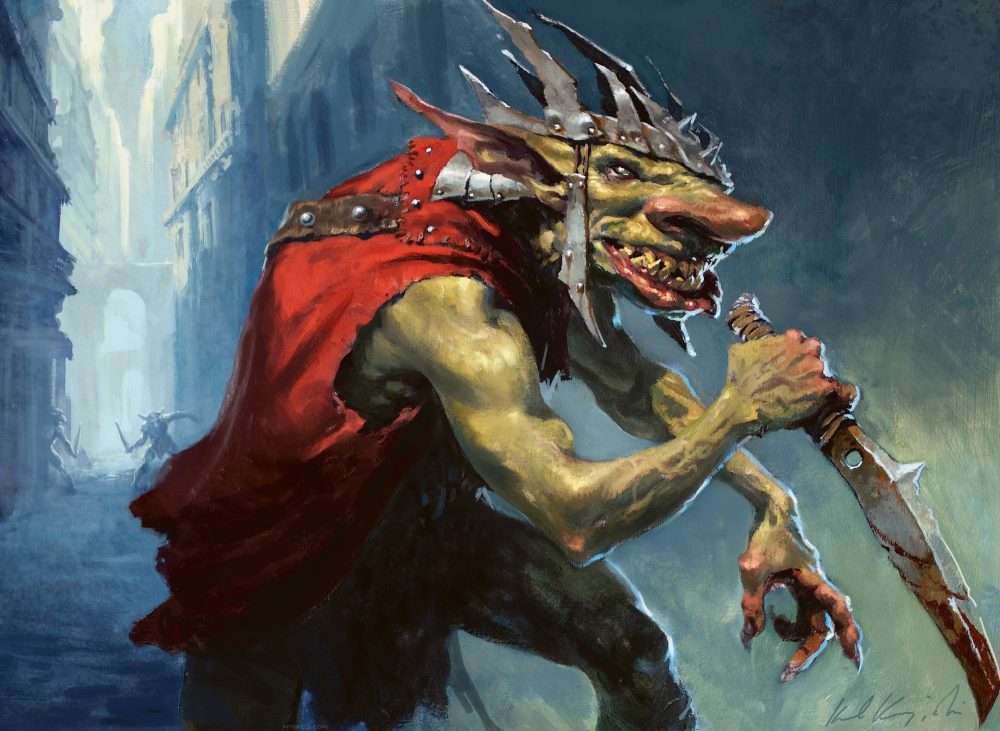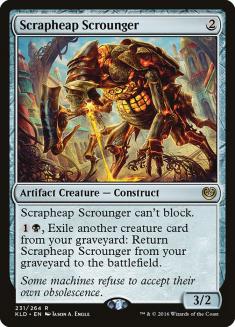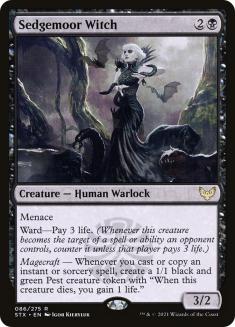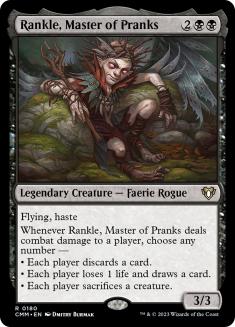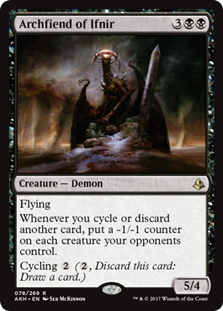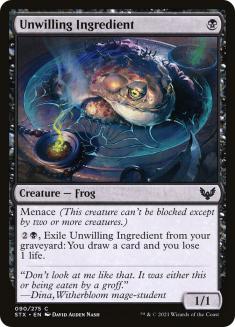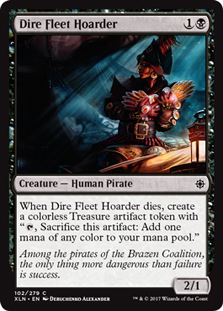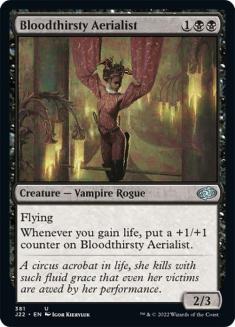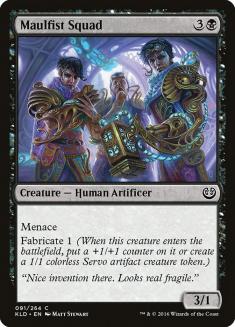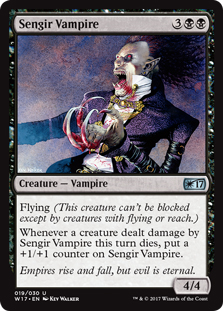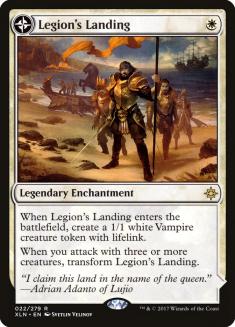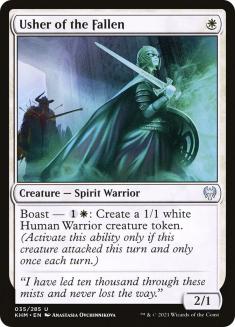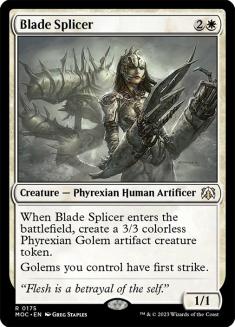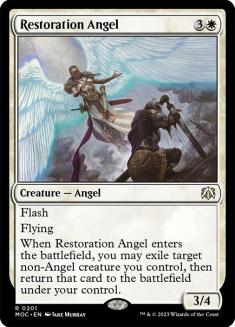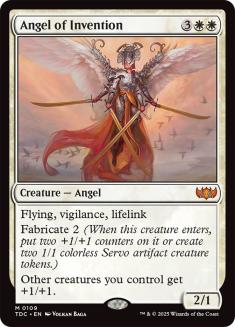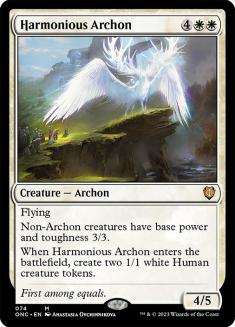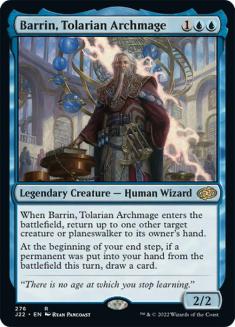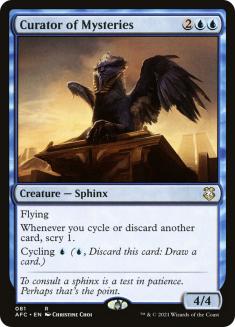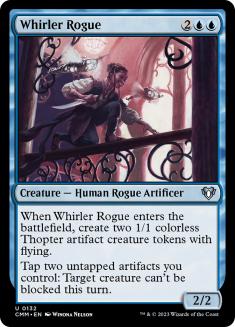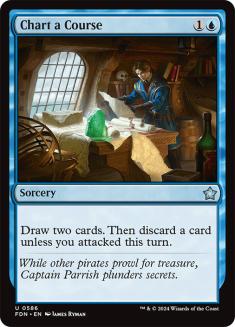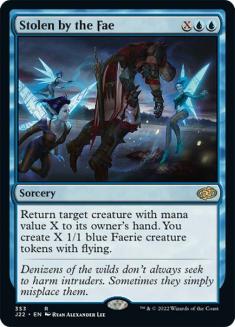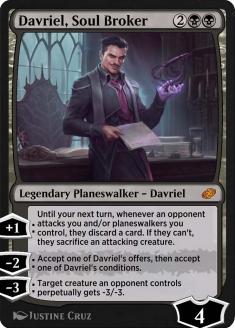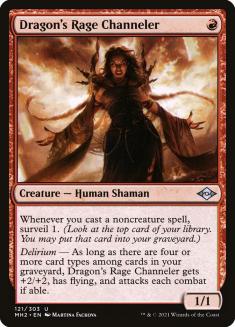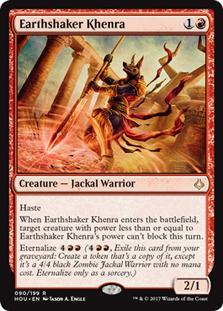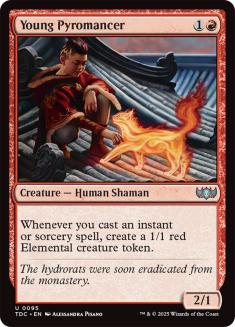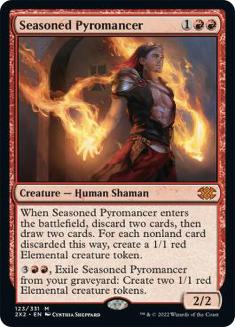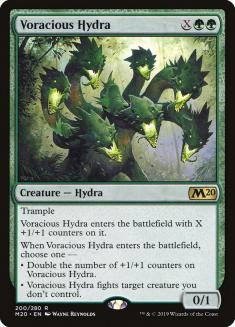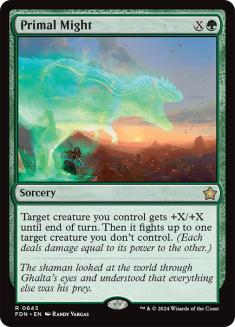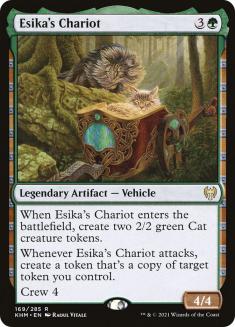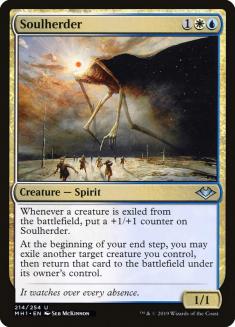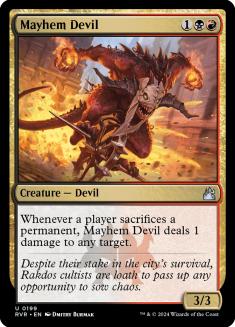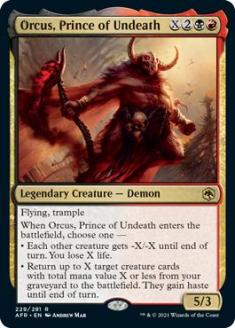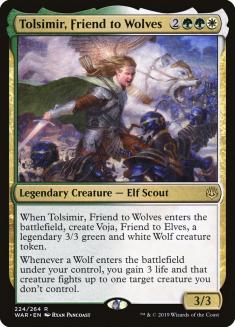With the release of Innistrad: Midnight Hunt looming, it’s Cube season on MTG Arena. The Tinkerer’s Cube is live through September 16th, which is a fairly radical departure from Chromatic Cube. Tinkerer’s Cube is also notably different from the more traditional Arena Cube, though the comparison there is closer. Of course, the Cube is altogether it’s own thing, so let’s talk about the specifics of what it offers.
This is the second run of Tinkerer’s Cube on Arena, and the information from the article announcing its return is fairly barebones, but it does outline the macro-archetypes of the Cube in addition to pointing out that the singleton rule is broken specifically to include four copies of Environmental Sciences to better support the learn mechanic in the Cube. If the inclusion of Lessons didn’t signal this clearly enough, the article also makes clear that the power level of this Cube is aimed lower than the other digital offerings, and I find that it feels much closer in power level to the average Booster Draft format than to other styles of Cube Draft.
Some of this is highlighted by the Cube’s wide power band. While there isn’t an explicit rare slot, there are a lot of comparisons you can make where it’s pretty clear which card you’d rather be casting the overwhelming majority of the time regardless of whatever else is going on in your deck. To illustrate my point, compare this curve:
To this one:
I say this not to disparage the Cube in any way, but to highlight what I believe to be a fundamental part of the play experience. Sengir Vampire would be excellent in most Booster Draft environments, and I have no qualms with playing it, but you have to accept that sometimes your opponent will drop a “bomb rare” against you that’s just a much better version of your excellent card. You can’t fully get away from this in any Cube, but the experience is much more pronounced when comparing Limited caliber cards to Constructed caliber ones.
The big takeaway from these comparisons though, is that while a lot of the environment centers around finding synergies, you still want to bias towards drafting cards with higher floors. I’ve seen quite a lot of games in this Cube decided largely by raw stats, so keep that in mind while drafting. I’d actually go so far as to say that curving out properly is more important than explicitly generating synergies. The Cube is heavy on creatures, light on removal and sweepers, and a number of the creatures are historically good at giving the beatdowns.
For a better understanding of the Cube, I’ve ported the list over to Cube Cobra for ease of analysis. Now let’s go over how to approach drafting the Cube by color.
White
White is in contention for most powerful color in Tinkerer’s Cube, which I’m sure is a refreshing change of pace for many. While the list does look quite different from the other digital offerings, white is packing some of its historical heaviest hitters and the different cast of creatures that attack and block aren’t terribly different from what white typically gets up to.
You’ll also find Angel of Invention and Harmonious Archon in the spread, which are generally on the weak side for things like the Magic Online Modern or Legacy Cubes are among the higher impact cards on the Arena Cubes. Once you factor in that Tinkerer’s Cube is largely about getting on the battlefield and keeping the pressure on, it’s easy to understand these cards being exceptional. Add on top of this that they play well with the blink theme and they’re among the highest overall picks in the Cube.
There’s an Equipment theme in Boros, though I find that you’ll get the most mileage by only lightly touching on this theme and focusing more on casting creatures on curve. An interesting card to discuss in this context is Sram, Senior Edificer. I think Sram is a relatively high pick even though I don’t want play more than 1-4 cards in my deck that draw a card off of Sram. It’s just that important to curve out, and if you draw some cards, great.
Blue
Where the white column in this Cube feels broadly familiar, the blue column is much different from what you usually see in Cube. There are only a small number of counterspells and this is a Cube where Pteramander and other beatdown creatures are what you actively want to draft. That theme isn’t going to change from color to colors, combat is really just what Tinkerer’s Cube largely comes down to. While this isn’t commonly blue’s role, it turns out that blue isn’t really bad at anything and the color does offer a lot of powerful tools for the job.
While it’s not exactly a beatdown creature, Mulldrifter is a cut above the average card in the Cube as well.
Beyond curving out, grabbing a couple bounce and counterspells as you see them are a big part of blue’s plan, and Curiosity and Curious Obsession are actually quite excellent in this environment. You’ll do more attacking with your blue decks than you might be used to, but with how removal light the Cube is, these decks are set up for success.
I was really happen when I first say Drake Haven in the card list, though it’s been really hit or miss in my experience. If you can draft it early there are a handful of cards that are great with it, such as Faithless Looting, but the support for it comes in part from cards that other players would naturally want like Compulsive Research or cards that even you don’t want like Choking Tethers. Unless you have some in-game currency to burn, I’d generally stick to the beatdown decks.
Black
Black is where you’ll find most of the choice removal in Tinkerer’s Cube as well as a handful of solid threats. With removal being as sparse as it is the sacrifice decks will often get the green light to go off with their Blood Artists as well.
Something I was curious about was whether we’d start seeing digital only cards in the Arena Cubes, and we see a big one here in Davriel, Soul Broker. The card has serious Cosima, God of the Voyage energy so I don’t really know what it does, but its presence is something to be aware of.
While I see the sacrifice synergies as some of the easier access synergies to exploit, I will once again emphasize the importance of having a functional and efficient mana curve over forcing anything too fancy. Some good news for the sacrifice decks on this front are that many of the cheap creatures in the Cube are expendable either by virtue of replacing themselves or just not being all that valuable to keep around. Hoard Robber is a fine card to bet on for these decks because it’s either connecting and you’re gaining value with the Treasures or it’s cheap enough that it’s not a huge cost to sacrifice it for value or just let it die to trigger your Falkenrath Noble.
An oldie but a goodie worth highlighting is Sangromancer. It doesn’t look like much by today’s standards, but it can really swing a damage race in a lower-powered Cube like Tinkerer’s Cube.
Red
As it often is, red is a bit bogged down by an abundance of cards on the high side of the mana curve, but all the same there’s a good spread of cheap threats and removals in red that make it a very desirable color in Tinkerer’s Cube. While the supporting cast isn’t all there, you do get quite a lot of great red threats here.
I’ve also seen Dragonmaster Outcast overperform with the general difficultly in removing creatures and Battle Cry Goblin has done some very impressive stuff with quite a lot of incidental goblins hanging around. Conspiracy Theorist is another ace in the red column, as both a self-contained value engine and a card that can really go off with other discard outlets- all attached to a two mana 2/2 which I’m more or less already in the market for in this Cube.
Krenko, Mob Boss is arguably the highlight of the red column. It’s another self-contained value engine that will overwhelm your opponent given enough time that also gains points from all of the odd Goblins in the spread. The more traditional fours aren’t in the Cube, and while Krenko doesn’t close as quickly as something like Hellrider, it does fill that void well relatively to the environment.
Red isn’t doing anything outside of its usual roles here, and I’ve found it to be a very competitive color in the Cube.
Green
Green is about as out of its element as blue is in Tinkerer’s Cube, though the well for good blue cards regardless of role is much deeper than greens. There are some mana accelerants in the Cube, such as Ilysian Caryatid, but green’s strength here comes mostly from casting large creatures on curve. This is more successful than it often is with the general dearth of removal, though you’ll have to be a bit more particular with green than the other colors.
Amusingly, some of the green cards that I’m most interested in are actually removal spells. Stuff like Pelt Collector is fine and I’ll play it in the interest of having an efficient mana curve, but mostly I’m looking for one of these cards to pull me into green:
These definitely aren’t the only good green cards, and stuff like Ripjaw Raptor and Cavalier of Thorns are actually quite effective at stalling the battlefield, though these are the three cards that are best at generating openings to start closing games. Esika’s Chariot actually a Vintage Cube level four drop for green that just takes over games in these low powered Cubes if you ever get a good attack with it. I don’t find green very broadly compelling, but Esika’s Chariot is definitely one of the most powerful individual cards in the Cube.
Gold
My experience has been that the mana in this Cube for playing more than two colors is only okay, and that coupled with the high emphasis on curving out means that I do believe that being multicolor in Tinkere’s Cube is a notable drawback. If the card in question is just more powerful than most or all of the mono-color cards that’s still more than reason enough to draft it though. These are the gold cards that I’m actively interested in drafting:
Not exactly a long list. I will say that a number of the gold cards come into play in significant ways once you decide to pursue a particular synergy, they just don’t have the broad appeal that you’ll often see from gold cards. A good example of this is Obsessive Stitcher. It’s a really nice card to have if you’re trying to make Drake Haven work or to play with Archfiend of Ifnir, but it’s not a huge draw to playing Dimir in and of itself.
Artifacts
There’s not much to write home about in the colorless column here. Just a bunch of fine role-players. Monoskelion is actually a solid two-drop for most any deck and is a perfectly fine creature to Ephemerate, so I wouldn’t expect to be able to pick it up too late in a pack. I’ll also sing my usual praises for Treasure Map, though given the aggressive and efficient nature of the Cube, it’s not nearly as good here as it is in the other Arena Cubes.
Lands
As I mentioned in the gold section, the mana in this Cube is mostly fine. I would generally keep things to two colors or go to three if I had a very focused plan. The only land cycle that gives access to more than two color is the Thriving lands, and while I do like this cycle, I also believe that entering the battlefield tapped is a significant cost.
Honestly, the most powerful land in the Cube based off of games that I’ve played is Den of the Bugbear. I had gone into my first draft of the Cube with some expectation that I’d get to spend some time messing around, but it seems that in most drafts the incentives are much higher to be aggressive.
If you’re more into Booster Draft than Cube Draft, I expect that Tinkerer’s Cube would be the sort of environment that would most likely entice you to take the plunge into the wonderful world of Cube. Happy drafting!

